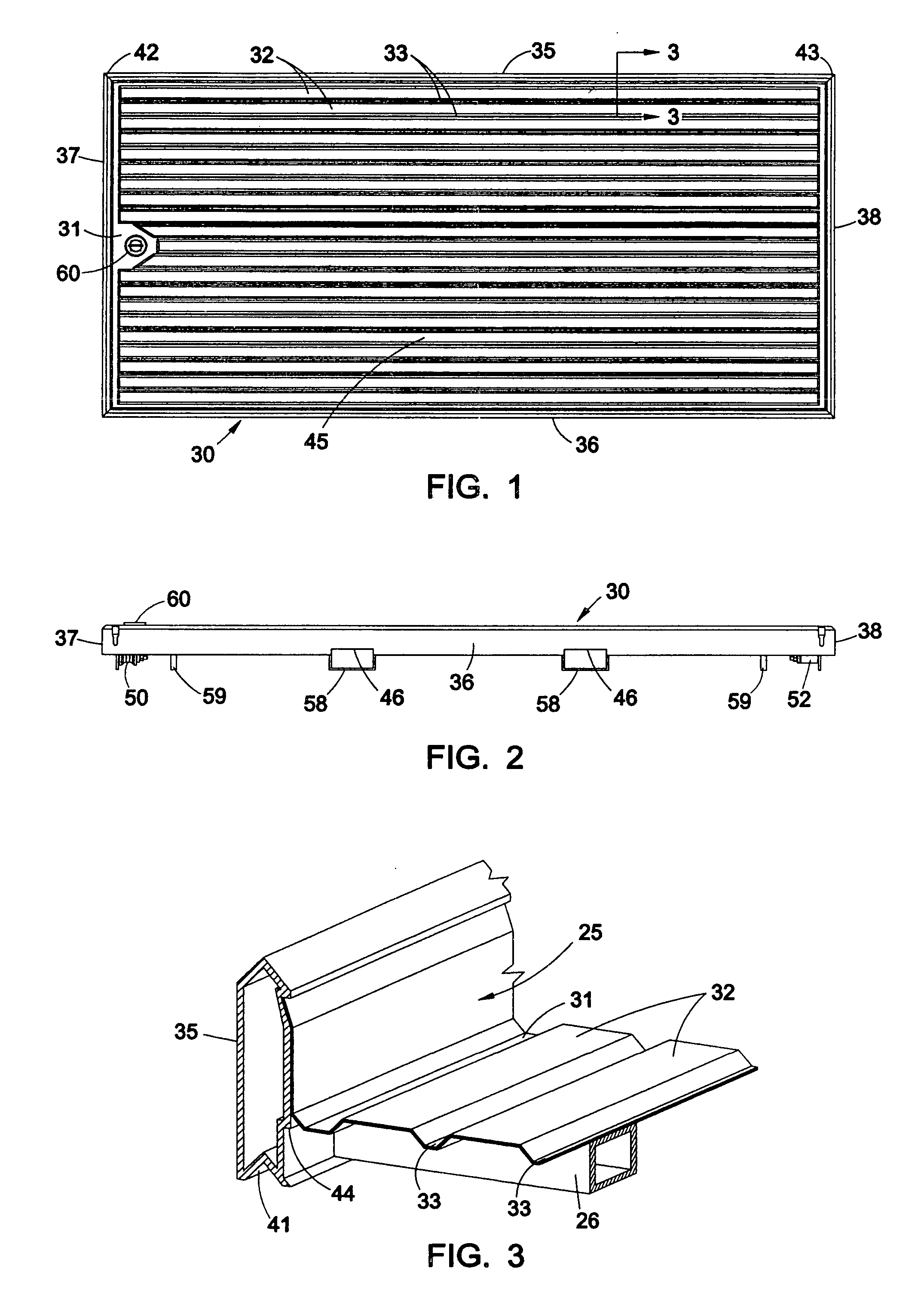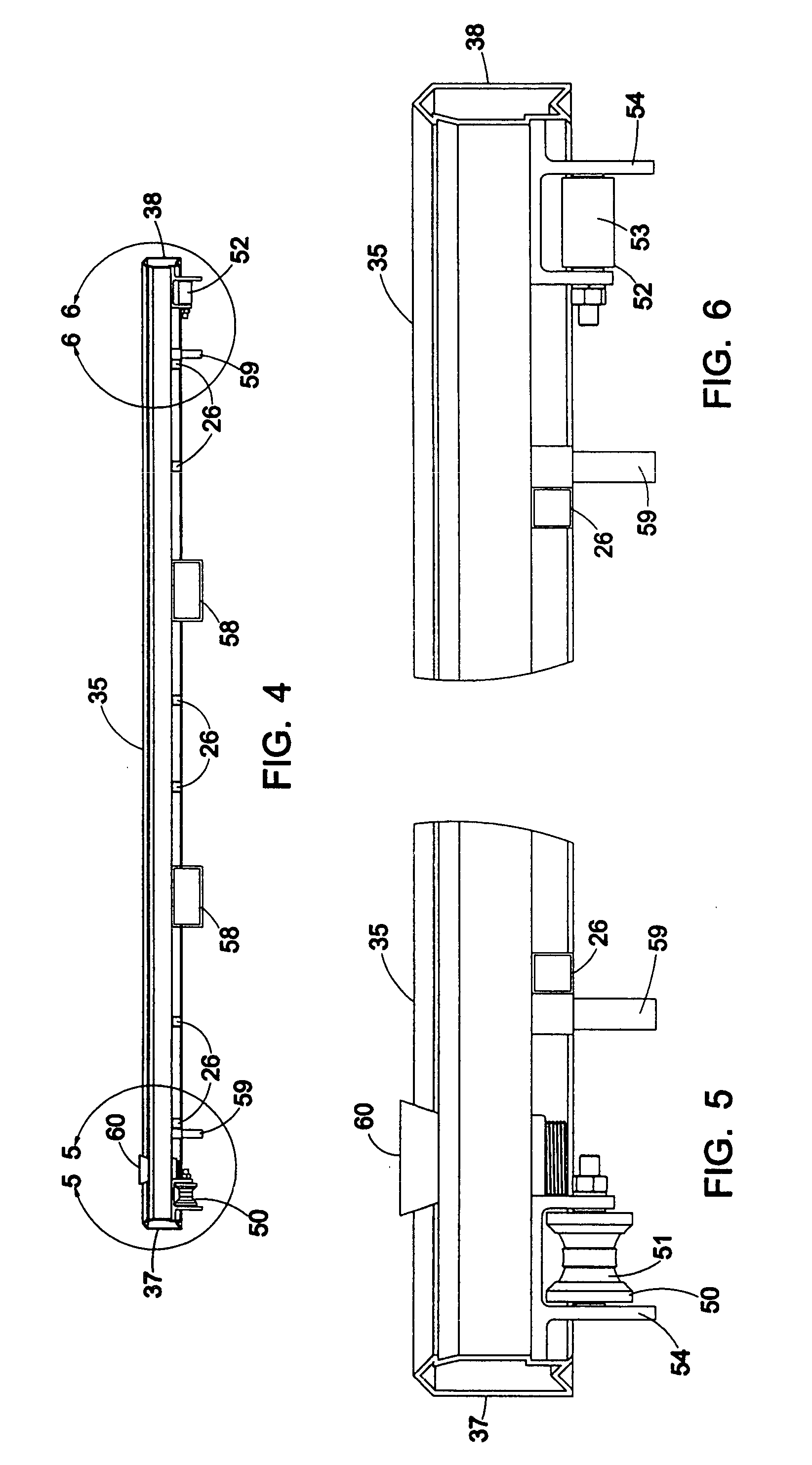Apparatus and methods for handling and controlling the nurturing of plants
a technology of apparatus and plants, applied in the field of apparatus and methods for handling and controlling the nurturing of plants, can solve the problems of not being able to adapt to the needs of plants receiving water, not being able to carry and transport off the rails, and not being able to meet the needs of plants
- Summary
- Abstract
- Description
- Claims
- Application Information
AI Technical Summary
Benefits of technology
Problems solved by technology
Method used
Image
Examples
Embodiment Construction
[0074] In a representative example, tray 30 is about 93 inches (236 cm) in length and about 45 inches (114 cm) in width. Side walls 35, 36, 37, 38 are fabricated from aluminum and welded where their ends meet. The overall height of the side walls is about 4 inches (10 cm) and their overall thickness is about 1 inch (2.5 cm). The aluminum thickness is about 1 / 8 inch (3 mm). The inverted V shape of top 40 and bottom 41 each have a height of about 1 / 2 inch (13 mm). Pan 25 is fabricated from 0.050 inch (1.3 mm) sheet aluminum. Flood region 45 can carry water to a depth in excess of 2.5 inches (6.3 cm).
[0075] Valve housing 61 is fabricated from plastic having a wall thickness of about 1 / 8 inch (3 mm) and an overall height of about 4 inches (10 cm). The outer diameter of the top end is about 27 / 8 inches (7.3 cm). The outer diameter of intermediate section 67 (exclusive of flange 69) and lower section 72 (exclusive of threads 77) is about 13 / 4 inches (4.4 cm). Split flange 69 projects radi...
PUM
 Login to View More
Login to View More Abstract
Description
Claims
Application Information
 Login to View More
Login to View More - R&D
- Intellectual Property
- Life Sciences
- Materials
- Tech Scout
- Unparalleled Data Quality
- Higher Quality Content
- 60% Fewer Hallucinations
Browse by: Latest US Patents, China's latest patents, Technical Efficacy Thesaurus, Application Domain, Technology Topic, Popular Technical Reports.
© 2025 PatSnap. All rights reserved.Legal|Privacy policy|Modern Slavery Act Transparency Statement|Sitemap|About US| Contact US: help@patsnap.com



